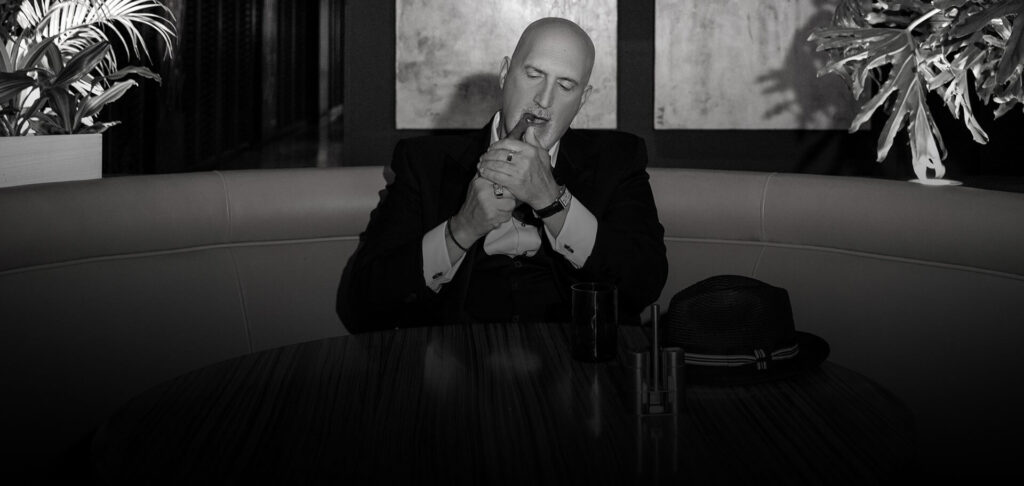“Communication Rules The World … But Thankfully That Doesn’t Really Matter Too Much.” – J. Riggio
Most folks I know would agree that communication is one way we order our thinking.
Maybe they’d even agree that the way we order our thinking is the way we order our life.
Some might even go so far as to agree that the way we order our thinking is the way we construct “reality” as we know it, or experience it.
Those who would go so far as to agree that the way we order our thinking is the way we construct “reality” could be on track to agree that “reality” is a construct of our thinking … and nothing more than that.
However, this post isn’t about that particular philosophical discussion.
This post is about the relationship between communication and thought, and then thought and action – therefore the relationship between communication and action (a “hoc igitur quod” argument you could say).
Changelessness at the Start
In a previous post here on Blognostra, “The Nature of Change“ I wrote about change, changelessness and healing. I was even so bold as to refer to myself as Healer. I did qualify that boast about being a Healer as specifically related to the work I do as a Change Artist.
I pointed out in “The Nature of Change“ that my work as a Healer is predicated on leading individual or organizational clients to having an experience of “changelessness that I presume resides at the core of their being. More succinctly I could say that my work is about The Nature of Being” – which is beyond change, i.e.: changeless.
For me this is the essence of all healing … arriving at the point of changelessness. However, for most folks this becomes a semantic discussion. The discussion sinks to the level of the “idea or ideal of changelessness” … an intellectualization, or mental masturbation as I prefer to think of it.
There is another way to approach the discussion, i.e.: somatically. In this way we begin to experience the sensation of changelessness as a whole-form response. This is the aesthetic approach (as opposed to the intellectual approach, i.e.: ontological versus epistemological, sensation versus ideation).
Communication as Representation
Now maybe we’re onto something.
I want to propose that all communication is representation, i.e.: communication points to something other than itself.
It may be possible to communicate directly in a way that seems pre-representational, e.g.: facial expressions associated with emotional states that are other-than-conscious responses, or pre-conscious responses.
I would push the arguement though that even pre-conscious facial expressions as communication are representational. My arguement is that as communication the facial expressions in question represent something other than themselves, i.e.: a sneer is a particular movement of specific facial muscles in combination, representing contempt for instance.
I would pursue the same tact in discussing any and all somatic response as communication … a “hoc igitur quod” argument, i.e.: as communcation somatic response is representational and no longer just the thing itself.
Anything as itself must by default be in space-time where it is, and visa-versa as communication somewhere else in space-time, even if only by virtue of the delay in translating the message, e.g.:
If in an interaction someone responds by sneering as a result of the contempt they experience by the time the sneer occurs the contempt has already been experienced, and as communication the sneer lags the experience by some distance. This is compounded by the time it takes for the communication to be received and translated by another (if that is included in the communcation equation).
All communication, “as communication,” is representative of something other than itself, and points to something in another space-time location than here and now.
Linking Communication, Action … and
Change/Changelessness
The way we communicate, verbally and non-verbally (i.e.: semantically and somatically), orders our thinking and determines the experience we have despite the actual reality of the thing itself!
If I bring this back to healing as an example we could consider two alternatives as they are ordered by how we communicate about healing.
A) Healing equals cure
-0r-
B) Healing equals acceptance
A) In the more typical modern medical view “to heal is a reference to cure or curing the symptoms experienced by the patient. In extreme cases the symptoms are considered to be indicators of impending death, e.g.:
In a simplified description severe septic infection (sepsis) creates a toxic environment in the whole organism overloading the immune system, creating massive inflammation, depriving bodily tissues of oxygen and nutrients, flooding the tissue with waste product, leading septic shock, organ failure and eventually death.
B) In some traditional societies healing is viewed outside of the framework of “cure“ or “curing … and is considered withing the framework of what the modern medical approach calls disease, e.g.:
Someone is diagnosed with some disease, or more simply they are experiencing the symptoms associated with disease as it would be diagnosed within the modern medical model. These symptoms indicate a dysfunction of the relationship of the individual to their environment, themselves or both and the healer seeks to realign the individual in a whole-form way re-establishing systemic balance and integration.
When the disease (i.e.: symptomology) is indicative of a chronic or terminal condition (i.e.: uncurable) the traditional healer seeks to re-establish systemic balance and integration within the framework of the symptoms as they are in the moment … accepting the immediacy of the changelessness of the individual.
The distinction between A) and B) (the modern medical model and the traditional healing model) is largely one of communication that dictates approach. In both systems there is an X/Y paradigm in play, i.e.: cause and effect/this is that.
In both systems the way the immediacy of the experience is communicated about determines what “IT” is for the individuals involved, i.e.:
A) “IT” is a chronic/terminal disease to be dealt with, and the primary outcome would be finding/attempting a cure (even when that’s clearly not an option, e.g.: incurable disease) … “I have “X” which means “Y” (about me and my condition/future) – I am an “X” patient/sufferer/survivor/etc.“
-or-
B) “IT” is a set of symptoms that the individual needs to accept as a part of their experience as they seek to balance and integrate themselves with what is happening … possibly changing the symptoms they experience or not, while remaining aware of themselves as NOT THE SYMPTOMS (OR THE DISEASE) … “I am experiencing “X” which means “Y” – but that is not who/what I am myself.“
While the communication distinctions are subtle, they are significant.
The most significant for our purposes here is the distinction of an ever-present core at the center of one’s being that remains changeless in the face of circumstance or situation (or symptoms), i.e.: WHO you are doesn’t change as a result of the experience you are having.’
If you know “WHO” you are in any given circumstance or situation, you can choose the action you take, and by virtue of choosing the action creating the experience you have as well.
Grabbing Hold of the Levers …
and Pushing Your Own Buttons
In the beginning there was the Word … and the Word became Flesh … – KJV Bible, John 1:1 & 1:14
Okay, you already know this isn’t a proclamation of theology or religious beliefs. My point is that, Words Become Things … whether those things are tanglible or intangible, they are manifest (one of the things to track for is how the intangible becomes tangible, i.e.: insubtantial non-material ideas that generate substantial material form … “I am become death, the destroyer of worlds.” – J. Robert Oppenheimer
When it comes to taking control of the choices in our lives that generate and organize the experience we have the best place, or at least one of the best places, to start is with your communication.
NOT YOUR LANGUAGE … which is only a fraction of your communication, but must be considered within the larger context of your communication as whole-form, i.e.
Behavioral Communication … the totality of the communication that generates the perceptions you have, the decisions you make, the actions you take … and the outcomes and experience you generate as a result.
There are at least three essential aspects to taking control of your choices with regard to your communication:
1. Intentionality
2. Somatic and Sensory Awareness
3. Language in Action (Pragmatics vs. Semantics)
When you take control of your choices you can heal what ails you … even if the symptomology remains “as is” … whether the condition is personal, professional or organizational (for convenience sake let’s consider all relationships organizational for now).
The key to the model I’m proposing is “Change.”
More specically learning how to organize and direct change.
My mentor, teacher and friend, Roye Fraser, liked to talk about directionality – the ability to choose the direction of action and outcome in your life.
I like to talk about cognitive inertia and logical chaining” in the same way … by revealing the internal codes you use to direct your perceptions, decisions, action-taking leading to the outcomes you create (on your own and with others) and experience you have (or not).
Regardless of the languaging you prefer … communication remains near and dear to the heart of change and choice (NOTE: if you cannot change at will you have no choice available to you).
I’ve made it my life’s quest to explore the domain of communication, change and choice … and it’s been an interesting journey.
Two final things for now …
1) One thing I can share with you is this … there are idiots and geniuses in this domain, and what differentiates them from one another has far more to do with learning and application than talent.
2) One thing I will recommend is that if you choose to begin, start with Somatic and Senosory Awareness … there’s some great stuff out there to help point the way, e.g.: “The Body of Life” by Thomas Hanna, any of the physical paths, e.g.: yoga, juggling or acting (especially something like mime), or one of the aesthetic paths, e.g.: photography, painting … (sculpture is particularly powerful as it bridges the visual and kinesthetic in a uniquely three dimensional way in the arts).
… and one more thing …
I am a HUGE fan of working with a Master myself …
Currently I am working with (Lt. Col.) Al Ridenhour, a 7th Degree Master of “Guided Chaos” (Ki Chuan Do – “Way of the Spirit Fist”).
The changes I’ve experienced in a few months of working with Al are remarkable!
There are a few principals in “Guided Chaos” …
- Looseness
- Balance
- Body Unity
- Adaptability
FWIW (I am an absolute rank beginner!) … for me it’s all about getting to Adaptability … and I recognize that I cannnot get there without, looseness, balance and body unity … so I’m learning to walk the path a step at a time.
The key is I’m learning really, really quickly under the guidance of a master of the form.
I did this when I learned how to do high-level protection training with dogs from Bob, I did it again when I learned how to do transformational change work with Roye … and now that I want to refine and polish my movement skills in a self-defense paradigm I’m doing it with Al.
To paraphrase Tom Cruise … “Sitting at the knee of a Master … there is no substitute.” … or doing whatever the heck he/she tells you to as you’re learning … wax on … wax off …
Or, to quote another master I once knew …
“Who love’s ‘ya baby?”
Joseph Riggio, Ph.D.
Princeton, NJ
PS – Summer Intensive Training w/Dr. Joseph Riggio:
MythoSelf Behavioral Communication
Professional Certification Training
Presented by ABTI | Princeton and Acuity World, DK
SPECIAL ONE WEEK ONLY OFFER
(expires 19 June 2013)
Opps … I made a BIG MISTAKE …
My partner Henrik Wenoe, at Acuity World has been on my case for weeks (months really) to announce this training program to my list … but I’ve simply been swamped.
The Early-Bird pricing “officially” ended on 15 May 2013 … and here we are almost a month later and I haven’t even let folks know about this powerful program we’re running this summer.
So I’m taking the blame and doing what I can to make it up to you …
For the next week you can still get the Early-Bird pricing for either attending the event live in-person, or via Live Internet Simulcast (there’s even an option to pre-purchase just the videos) … when you register directly using this link:
MythoSelf Behavioral Communication – Summer Intensive
You’ll SAVE $3000 from the Regular Investment for this 12-day Intensive program when you attend it live (BTW the investment includes room and board with three meals a day, snacks and coffee/tea/water all day long).
If you want to attend via the Live Internet Simulcast … now broadcast in HD via my private LiveSteam MythoSelf Channel … or pre-purchase the HD video recordings, you’ll be able to take advantage of the Early-Bird pricing as well.
BUT … you must act immediately to get the Early-Bird Pricing (there’s also a three-payment plan I’ve set up for you as well if you want to spread out your payments over three months) …
Here’s the link you need to use to register and get the Early-Bird pricing:
MythoSelf Behavioral Communication – Summer Intensive
[NOTE: The full program brochure is here: http://www.acuityworld.com/pictures_da/med_clips/Joseph%20Riggio_2013.pdf]



